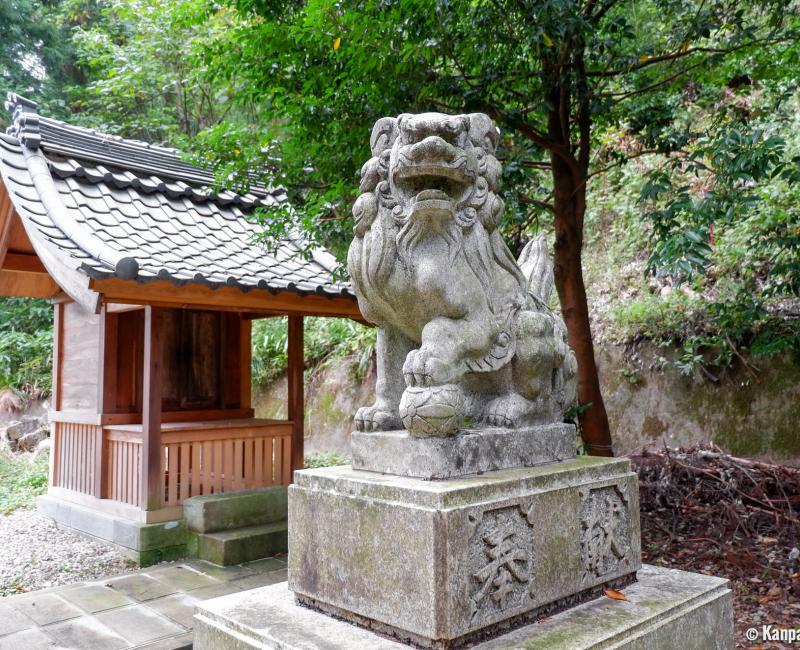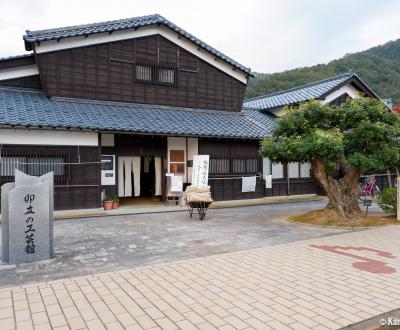Echizen
One of the Traditional Washi Paper Villages
Echizen is a city located in Fukui prefecture near the Sea of Japan, specialized in the art of making Japanese washi paper and keen to preserve this traditional know-how that originated from the exchanges with Chinese and Korean merchants 1,500 years ago. Meet master craftsmen and discover the origins of the world’s first paper made of wood and plant fibers at Echizen Washi Village in Imadate district.
The presence of history is immediately noticeable when arriving at Echizen. The discovery of the famous traditional Japanese paper happens in the heart of the quiet countryside, far from the large modern cities of the archipelago.

The uses of Washi paper
Of a superior quality, sturdy, beautiful and extremely versatile, washi paper was formerly reserved to official documents and sacred Buddhist texts. The latter were carefully preserved in the numerous pagodas throughout the archipelago, a type of archive that still exits in some religious sites.
Aside its basic writing functions, the Japanese paper is also used in the traditional furnishing of houses and temples in Japan and especially to cover two type of sliding doors for rooms partitioning: the completely opaque fusuma and the translucent shoji. The paper filters the light, giving it a natural sensuality and an inimitable cachet to the interior.
Washi paper can also be used outdoors, hardened and / or rendered very sturdy thanks to the addition of specific ingredients. Suspended lanterns 🏮 at temples are made of washi paper for example, as well as the tako, the decorative kites that can be spotted flying above rivers, on the seaside or in parks. The most famous are the beautiful koinobori 🎏 flying carps displayed in early May for Kodomo no Hi (Children’s Day).

Washi no Sato Village
East to Takefu station, the small Echizen Washi Village is inviting to learn about the culture of traditional Japanese washi paper. It is therefore a good sightseeing address for artists and history aficionado.
The visit starts with meeting M. Yoshinao Sugihara who follows the path of his ancestors and is one of the local washi makers. He gladly receives visitors in his gallery, an old wooden house that is at least two hundred years old. During a short tea break, he likes to tell the story of his village and of paper. His favorite materials are kozo (a kind of mulberry) for its long fibers, but also gampi (a type of rosids) for its inimitable gloss allowing to make paper sheets of an exceptional thinness. The world’s big names are fond of his production, proof that M. Sugihara’s reputation has far crossed the borders of the region. Some of his creations can be admired as kakemono hanging in the lobby of luxury hotels 🏨.
Those eager to experience paper making can visit the Udatsu Paper & Craft Museum, where they will be warmly welcomed. The various steps of the paper making process are all demonstrated in the same workshop. Attendees can observe closely the craftsman’s methodical and precise movements to make a paper sheet from a mix that was prepared beforehand. Precision and skills are keys to make a good finished product. Then visitors can try their hand at making their own paper, the most skilled will reach a satisfying result after a few attemps, but it is not as easy as it seems!
When leaving the paper mill, the vermilion red torii ⛩️ gates guarding the entrance of Okamoto-jinja Otaki-jinja shrine, enshrining the goddess of washi, can not be missed. The only one of its kind in Japan, the site is superbly highlighted by the giant pine trees that surround the wooden pavilions, some of which harboring intricate sculptures.
Aside the technical know-how, artisanal paper making also requires an abundance of pure water, a necessity that is usually found in Japan’s rural areas and of course in Echizen. The city therefore developed a true regional expertise since the 7th century and that knowledge was handed down from generation to generation ever since. Nowadays, about forty families in Echizen continue washi paper making, an activity designated National Treasure and inscribed to the UNESCO’s Intangible Cultural Heritage in 2014. Additionally, Shimane, Gifu and Saitama prefectures are also particularly renowned and acknowledged for their paper making at international level.

